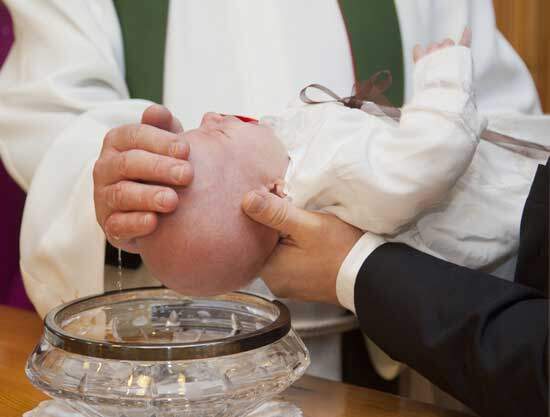Like many Protestant Christians worldwide and throughout history, the Seventh-day Adventist Church believes in baptism by immersion, a ceremony in which individuals briefly go under water to symbolically and publicly demonstrate ““”dying to an old life“”” and ““”beginning a new life in Jesus Christ.“””
The idea of ““”dying to an old life“”” refers to accepting and honoring Jesus’ death to sin and resurrection to righteousness. By submerging and re-emerging from the water, we are declaring that we will live with our minds fixed on Jesus, rather than the broken world around us. (Romans 6:1-5; Galatians 2:20; Colossians 2:12).
This type of baptism is repeatedly demonstrated and affirmed in Scripture.1
This page will walk you through what the Bible teaches about baptism and how Adventists practice it today. You’ll learn
- What is baptism?
- How does the Bible instruct us to practice baptism?
- What do Adventists teach about its necessity?
- What to expect at an Adventist baptism
- How does someone take the step of baptism?
To begin, here’s the Adventist fundamental belief about baptism:
“By baptism we confess our faith in the death and resurrection of Jesus Christ, and testify of our death to sin and of our purpose to walk in newness of life.
Thus we acknowledge Christ as Lord and Savior, become His people, and are received as members by His church.
Baptism is a symbol of our union with Christ, the forgiveness of our sins, and our reception of the Holy Spirit.
It is by immersion in water and is contingent on an affirmation of faith in Jesus and evidence of repentance of sin. It follows instruction in the Holy Scriptures and acceptance of their teachings.”
Keep reading for more details!
What is baptism?
Baptism is a religious ritual, usually involving immersion in water, that declares someone’s decision to follow Jesus Christ or be “born again.” It’s one of the oldest and most important biblical “ordinances,” or religious rituals, practiced in the Christian church throughout the past couple thousand years.
We can better understand baptism by asking:
Let’s start with the first question.
What does baptism mean?

Photo by Rhodi Lopez on Unsplash
Baptism is a symbolic reenactment of Jesus’ death and resurrection. Just as Jesus died and was buried in the grave, the new Christian is buried under the water of baptism. Then, as Jesus rose from the grave, the individual rises from the water—a symbol of a new life in Christ.
The apostle Paul in the New Testament describes it this way:
“Or do you not know that as many of us as were baptized into Christ Jesus were baptized into His death? Therefore we were buried with Him through baptism into death, that just as Christ was raised from the dead by the glory of the Father, even so we also should walk in newness of life” (Romans 6:3–4, NKJV).
These verses sum up what salvation is.
During baptism, we go under the water, which symbolizes our death in Christ. The death of our previous life of sin, rebellion, and rejection of God and His law.
It also symbolizes our acceptance of God’s gift and adoption into His family, despite our past life of sin.
That past life of sin has died and been buried underwater. We are freed from it.

Photo by Pisit Heng on Unsplash
Paul, in that same chapter, later explains:
“For if we have been united together in the likeness of His death, certainly we also shall be in the likeness of His resurrection, knowing this, that our old [person] was crucified with Him, that the body of sin might be done away with, that we should no longer be slaves of sin. For he who has died has been freed from sin” (Romans 6:5–6, NKJV).
Notice, the old person is who we were before we were “born again” (John 3:3). We’ve been “crucified” with Him, meaning we have died with Him to our old self and our old ways (Galatians 2:20).
But baptism is not just going under the water.
Coming up out of the water represents being cleansed and starting a new life in Christ.
Not only has our old person died, but we are also new people in Jesus (2 Corinthians 5:17).
The Handbook of Seventh-day Adventist Theology explains this concept:
“Christians die to sin and are raised up in their baptism; in this way they demonstrate their acceptance of God’s offer of forgiveness through Jesus Christ. Through Him, Christians receive the ability to die daily to sin and to rise to the newness of life through obedience to God.”2
But you may be wondering, Where did this ritual begin?
Where did the act of baptism come from?

Photo by Emiliano Orduña on Unsplash
The practice of baptism is firmly rooted in the New Testament. Jesus first modeled it at the beginning of His ministry (Mark 1:9).
He went down to the Jordan River to be baptized by John the Baptist, the man who had been preparing the way for Jesus’ arrival (Matthew 3:3).
John resisted baptizing Jesus because he believed that Jesus should be baptizing him. But Jesus answered:
“Permit it to be so now, for thus it is fitting for us to fulfill all righteousness” (Matthew 3:15, NKJV).
What did it mean for Jesus to “fulfill all righteousness”?
Jesus came to Earth to both be our sacrifice and live a perfect, sinless life as our example.
His baptism was a public demonstration of His faith in His Father and also of His death and resurrection. Since He was setting an example for us, He went through the baptism we are to go through.
As John baptized Jesus, the Holy Spirit came down from Heaven in the form of a dove. And God’s voice accompanied it:
“This is My beloved Son, in whom I am well pleased” (Matthew 3:17, NKJV).
All three persons of the Godhead were present at the baptism of Jesus.
And this fact is so important that later in His life, when Jesus gave His followers a charge known as the Great Commission, He said:
“All authority has been given to Me in heaven and on earth. Go therefore and make disciples of all the nations, baptizing them in the name of the Father and of the Son and of the Holy Spirit, teaching them to observe all things that I have commanded you; and lo, I am with you always, even to the end of the age” (Matthew 28:18–20, NKJV).
As His disciples—followers—preached the gospel to the whole world, they were to baptize new believers in the name of the Father, the Son, and the Holy Spirit. Jesus singled out this ritual as something significant at the beginning of the Christian life.
How does the Bible instruct Christians to practice baptism?
 The New Testament teaches that this important biblical rite is a practice that involves immersion in water.
The New Testament teaches that this important biblical rite is a practice that involves immersion in water.
The Greek word translated “to baptize” comes from the root bapto, which means “to dip in or under.” This word gives the idea of a person being completely dipped under the water.
For instance, the Bible says that John the Baptist baptized in the Jordan River (Matthew 3:6; Mark 1:5) and in “Aenon near Salim, because there was much water there” (John 3:23, NKJV).
Why would John have needed a place with “much water”?
No doubt because he was fully immersing people in the water.
Notice also what Mark wrote about Jesus’ baptism:
“It came to pass in those days that Jesus came from Nazareth of Galilee, and was baptized by John in the Jordan. And immediately, coming up from the water, He saw the heavens parting and the Spirit descending upon Him like a dove” (Mark 1:9–10, NKJV).
The text mentions Jesus “coming up from the water,” meaning that He would’ve had to have been under the water.
The book of Acts gives another example of baptism by immersion.
It tells the story of the apostle Philip meeting an Ethiopian eunuch who was a follower of the Jewish faith (Acts 8:27) and had become convinced that Jesus was the Messiah.
“Now as they went down the road, they came to some water. And the eunuch said, ‘See, here is water. What hinders me from being baptized?’ Then Philip said, ‘If you believe with all your heart, you may.’ And he answered and said, ‘I believe that Jesus Christ is the Son of God.’ So he commanded the chariot to stand still. And both Philip and the eunuch went down into the water, and he baptized him. Now when they came up out of the water the Spirit of the Lord caught Philip away” (Acts 8:36–39, NKJV).
They both “went down into the water” and “came up out of the water”—again implying an immersive baptism.
But since the Bible speaks so clearly about this method of baptism, why do some churches practice sprinkling instead?
Where did the idea of infant baptism (“sprinkling”) come from?

Photo by Pixaba
While an endearing practice meant to care for the souls of beloved babies, “sprinkling,” or ceremonially placing drops of water on the head of an infant, didn’t begin in Bible times but in early church customs in the second and third centuries.
At that time, infant mortality rates were high. Fearful of their children dying and going to hell before baptism, parents would have them baptized soon after birth, believing that the ritual washed their sins away.
Immersing an infant’s head underwater was risky, though some would do it carefully by using a “baptismal font” deep enough for a quick dip.
Other groups used a ceremonial practice of sprinkling holy water on the babies’ heads.
If a baby died and hadn’t been baptized, people were concerned that the soul of the baby would go to hell or to purgatory.
But this viewpoint misunderstands what the Bible teaches about baptism and its importance to salvation.
Baptism isn’t what saves a person. It’s what a saved person does to make his or her faith public.
Baptism comes only after a person accepts that Jesus Christ died to offer us the gift of salvation.
This leads us to our next question.
What do Adventists teach about the necessity of baptism?

Photo by Vasily Koloda on Unsplash
Adventists do not believe in salvation by works nor salvation by baptism.
Baptism is simply an outward expression before humans and God. It demonstrates our faith in Jesus, who has already saved us—even before baptism.
The water doesn’t have anything magical or supernatural that literally cleanses us.
For a loose analogy, think of a high school or college graduation ceremony.
The ceremony recognizes a person’s completion of course requirements. But the ceremony is not what created the achievement. It’s a symbol of it.
When we have accepted Christ by faith—and begun a new life with Him—our baptism is an expression of what we have already experienced.
This is why sprinkling babies isn’t biblical. The baby has yet to make that choice to follow God. The Bible teaches that baptism should take place when a person is old enough to be taught the truths of the Bible and make a conscious choice for Christ (Matthew 28:19–20).
What to expect at an Adventist baptismal ceremony
In the Adventist Church, baptism begins with a pastor reading the baptismal vows of the Seventh-day Adventist Church. These vows are an acceptance of the foundational teachings of the Bible as expressed in the 28 Fundamental Beliefs of the Adventist Church.
Here are just a couple of examples from the baptismal vows listed in the Seventh-day Adventist Church Manual:
- Do you believe there is one God: Father, Son, and Holy Spirit, a unity of three coeternal Persons?
- Do you accept Jesus Christ as your Lord and personal Savior, believing that God, in Christ, has forgiven your sins and given you a new heart, and do you renounce the sinful ways of the world?
- Do you know and understand the fundamental Bible principles as taught by the Seventh-day Adventist Church? Do you purpose, by the grace of God, to fulfill His will by ordering your life in harmony with these principles?
The Bible beliefs mentioned will already be familiar to the baptismal candidate since the Adventist Church encourages people to complete a series of Bible studies prior to baptism (Matthew 28:19–20).
The pastor will read the question and ask the individual to affirm belief in them by raising their right hand or saying a hearty “amen” or “yes.”
Then, the pastor and the baptismal candidate will change their clothes in preparation for the baptism (if they haven’t already). In some churches, they wear baptismal gowns.
Once ready, both will walk into the water—either in a baptismal tank in the church or outside in a pool, lake, or river.
The pastor may make some comments or give the baptismal candidate the opportunity to say a few words. Afterward, the pastor will declare, “I baptize you in the name of the Father, and of the Son, and of the Holy Spirit.”
Then the pastor will place a hand on the individual’s back while covering the person’s nose with a towel (to prevent water from going up their nose). The person is lowered into the water, and quickly brought up again.
How many times should a person be baptized?
Baptism usually occurs once at the beginning of someone’s walk with God. That person is baptized into the body of Christ and receives church membership (1 Corinthians 12:13).
However, the Adventist Church does allow for rebaptism in certain circumstances:
- When someone has turned away from God and comes back to Him
- When someone learns new significant doctrines in the Bible and wants to express their recommitment to God
The second way finds its precedence in a story in Acts 19:1–5.
The apostle Paul encountered a group of people who were followers of Jesus but had never heard of the Holy Spirit.
When Paul taught them, they decided to be baptized again, signifying their increased understanding of the truth.
The Adventist Church doesn’t limit how many times a person can be baptized. But because baptism is a serious decision, we encourage individuals to take the step after careful thought and prayer.
The Church Manual puts it this way:
“Rebaptism should occur only in special circumstances and should be relatively rare. To administer baptism repeatedly or on an emotional basis lessens its meaning and represents a misunderstanding of the gravity and significance that Scripture assigns to it.”
But for someone who is wanting to take that step with a sincere heart, here’s how to do it.
How does someone take the step of baptism?

Photo by West Kenya Union Conference Adventist Media on Unsplash
The most crucial part of baptism starts with believing in God, which leads to baptism. The Word of God makes that part explicit:
“He who believes and is baptized will be saved; but he who does not believe will be condemned” (Mark 16:16, NKJV).
“So they said, ‘Believe on the Lord Jesus Christ, and you will be saved, you and your household’” (Acts 16:31, NKJV).
Notice how these verses say that belief comes first, then baptism.
Belief, not baptism, is what saves.
While the Bible teaches that the practice of baptism is important, it is not a means of salvation. Salvation is by faith alone.
Then, when we love God so much that we wish to follow Him wherever He leads, it only makes sense to commemorate this decision with a meaningful ceremony.
Similar to how weddings celebrate the union of people pledging their lives to one another, or how birthday parties celebrate another year of human life, baptism celebrates one of the greatest joys we can fathom—that Jesus died for us, cleansed us of our sins, and rose again so that we could have eternal life with Him.
Would you like to consider the step of baptism yourself?
Jesus encouraged His followers to make disciples and teach them. Similarly, the Adventist Church encourages people to study the Bible and understand the decision they’re making before being baptized.
Related Articles
More Answers
Who Changed the Sabbath to Sunday?
If the Bible never mentions the change of the Sabbath, why do so many today attend church on Sunday?
How Adventists Developed the Sanctuary Doctrine and What It Means
The sanctuary was a building at the center of ancient Israelite society that gives us a small picture of the original sanctuary, God’s throne room in heaven (Hebrews 8:1-2).
What Do Adventists Believe About the Atonement?
If you’ve spent much time in the Bible books of Leviticus or Numbers, you might’ve noticed the word atonement.
What Do Adventists Believe About Faith and Works?
Adventists believe we are saved by faith, which is the belief and trust we have in Jesus Christ to save us from our sins. Jesus, then, enables us to live in harmony with God’s commandments and serve others with love—sometimes referred to as “works.”
What Day Is the Sabbath, and How Do We Know?
The weekly Sabbath is a memorial of God completing the creation of our world. He established this special day of rest and reflection in the first book of the Bible (Genesis 2:2-3).
What Adventists Believe about Unity in Christ?
Seventh-day Adventists believe in biblical unity—the idea of believers in Jesus being united by the truth of the Bible and the common goal of representing God and His love to the world.
What Do Adventists Believe About the New Earth?
Seventh-day Adventist, like other Christians, believe that after the second coming of Christ, God will cleanse our earth by fire and then restore it back to Eden-like perfection.
What do Seventh-day Adventists Believe about the Sabbath?
Seventh-day Adventists believe that the biblical Sabbath is a beautiful gift of rest that God gave to us at Creation and that remains valid to this day. Falling on the seventh day of the week—Saturday—it connects us to God in a special way and offers us a weekly opportunity to be physically, mentally, and spiritually refreshed.
What do Seventh-day Adventists Believe about the Life, Death, and Resurrection of Jesus?
Jesus Christ, who lived in Nazareth of Judea (now Palestine), is the foundation of the Adventist faith. This is because it’s only through the life, death, and resurrection of Jesus that any of us have hope of life beyond the toil, suffering, and death of this world.
What Seventh-day Adventists Believe About Stewardship (and What It Means)
Love for God and our fellow humans is the overriding principle of the Seventh-day Adventist faith. And we express that love in an overarching way through how we manage the things—material and immaterial—that God has entrusted to us.
What Do Adventists Believe About the Law of God?
Seventh-day Adventists believe that God’s law reflects His character of love (1 John 4:8; Romans 13:10). It is perfectly summarized in the Ten Commandments given to Moses on Mount Sinai, showing us the practical application of loving God and loving other people.
What Adventists Believe About Spiritual Gifts in the Bible
Seventh-day Adventists believe that spiritual gifts are talents that the Holy Spirit gives to believers and followers of Jesus Christ. These gifts are different but complementary, and they often equip followers of Christ with the ability to spread the good news about Jesus and encourage its members.
What Seventh-day Adventists Believe About Christian Growth
Christian growth is the experience of allowing Jesus Christ to work in our lives through the Holy Spirit and restore in us the image we were designed for—God’s image of selfless, other-centered love.
Is it necessary to attend church to draw closer to Christ?
While you certainly don’t have to go to church to develop a relationship with Jesus, the Bible makes it clear that gathering together with other believers can be really beneficial for your spiritual growth.
What do Seventh-day Adventists Believe about The Great Controversy?
The Bible unveils a supernatural struggle between good and evil which Adventists often refer to as “The Great Controversy.”
What Adventists Believe about The Experience of Salvation?
Adventists believe that salvation is a gift that anyone can receive through belief and commitment to Jesus Christ and His sacrificial death.
What do Seventh-day Adventists Believe about Marriage and Family?
The Seventh-day Adventist Church believes God made marriage and family as special blessings to reflect Him and His love for us.
What Do Seventh-Day Adventists Believe about God the Holy Spirit?
Besides believing in the full divinity of God the Father and God the Son, Adventists also believe in the full divinity of God the Holy Spirit. This post will go over what the Bible says about the Holy Spirit. You’ll learn:
What Seventh-day Adventists Believe about Christian Behavior
The patterns of actions and words that make up behavior are central to any type of belief system because they flow from those beliefs. Seventh-day Adventists look to the Bible, with Jesus as the perfect example, for guidance on shaping our daily behavior.
What Are Seventh-day Adventists Beliefs on Death and the Resurrection?
The thought of dying can seem scary. And the idea of being resurrected—or coming back to life—can seem a little uncomfortable.
What Seventh-day Adventists Believe about the Trinity
The Seventh-day Adventist Church believes in the doctrine of the Trinity, the three-in-one Godhead of Father, Son, and Holy Spirit. We believe that all three members of the Godhead are fully God, that they have different functions but are united in purpose.
What do Seventh-day Adventists Believe about the Remnant and its Mission?
The “remnant” are a group of faithful believers that have existed throughout history and proclaimed God’s truth, love, and plan to save humanity. They “remain” with God even amid persecution and also when it seems everyone else has rebelled against God or compromised their beliefs.
What Adventists Believe About the Millennium and the End of Sin
Like most Christians, Seventh-day Adventists hope for the time when sin and evil will no longer exist. The Bible teaches that God will bring an end to sin after a thousand-year period of time called the millennium.
What Do Seventh-day Adventists Believe About the Gift of Prophecy?
Adventists believe the gift of prophecy is a spiritual gift that the Holy Spirit gives to specific individuals to help the church carry out Jesus’ Great Commission (Matthew 28:16–20). Prophecy helps strengthen, encourage, and comfort His people (1 Corinthians 14:3).
What Do Seventh-day Adventists Believe about the Father?
Like most Protestant Christians, Seventh-day Adventists believe in God the Father as part of the Godhead. We call Him Father because of His role towards Jesus. Jesus Himself encouraged us to also call Him Father.
What Adventists Believe About Jesus’ Ministry in the Heavenly Sanctuary
Seventh-day Adventists believe, according to the book of Hebrews, that Jesus is in the heavenly sanctuary—or temple—right now. He is our high priest, presenting His sacrificial death for our forgiveness and cleansing the record of our sins in the sanctuary.
What do Seventh-day Adventists Believe about the Lord’s Supper (Communion)?
Like many Protestant Christians, Seventh-day Adventists believe in the practice commonly called the Lord’s Supper or Holy Communion. They drink grape juice and eat unleavened bread in obedience to Jesus’ direct instructions to do it in remembrance of Him (1 Corinthians 11:24–25).
What Seventh-day Adventists Believe about the Bible
The Bible forms the foundation for all that Seventh-day Adventists believe and teach. It reveals God to us and is our final authority on all issues relating to morals, doctrine, salvation, and the very nature and purpose of life itself (Isaiah 8:20).
What Do Seventh-day Adventists Believe about The Second Coming of Christ?
The second coming of Jesus Christ is an event the Bible prophesies will occur at the end of this world’s history. It’s called His second coming to distinguish it from His first, when Jesus was born to Mary and lived as a human before dying on the Cross.
Didn’t find your answer? Ask us!
We understand your concern of having questions but not knowing who to ask—we’ve felt it ourselves. When you’re ready to learn more about Adventists, send us a question! We know a thing or two about Adventists.
































